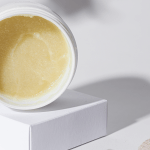Introduction to Menopause and Vaginal Health
Overview of Menopause and Its Impact on Women’s Health
Menopause marks the end of a woman’s reproductive years, typically occurring in the late 40s to early 50s. This natural biological process is characterized by the cessation of menstruation and a significant decline in the production of the hormone estrogen. The reduction in estrogen levels can have a profound impact on various aspects of a woman’s health, leading to symptoms such as hot flashes, night sweats, mood swings, and sleep disturbances. Beyond these immediate symptoms, menopause is also associated with long-term health concerns, including an increased risk of osteoporosis, cardiovascular disease, and changes in metabolic function.
Common Vaginal Health Issues During Menopause
One of the areas most affected by menopause is vaginal health. The decline in estrogen levels can lead to a condition known as vaginal atrophy, which is characterized by thinning, drying, and inflammation of the vaginal walls. This can result in discomfort, itching, pain during intercourse (dyspareunia), and an increased susceptibility to vaginal infections. Other common issues include urinary incontinence and recurrent urinary tract infections, which are part of the broader genitourinary syndrome of menopause (GSM).
Importance of Addressing Vaginal Health
Addressing vaginal health during menopause is crucial for maintaining a woman’s quality of life. Vaginal discomfort can significantly affect intimacy, sexual function, and overall well-being. Moreover, untreated vaginal atrophy can lead to more severe complications, such as vaginal infections and urinary problems. It is essential for healthcare providers to recognize and address these issues proactively, offering treatment options that can alleviate symptoms and improve the quality of life for menopausal women.
Understanding Vaginal Atrophy and Related Conditions
Definition and Symptoms of Vaginal Atrophy
Vaginal atrophy, also known as atrophy vaginitis, is a condition that occurs when the vaginal walls become thinner, drier, and less elastic due to a decrease in estrogen levels. This condition is most commonly associated with menopause, when a woman’s body produces less estrogen. Symptoms of vaginal atrophy can include vaginal dryness, itching, burning, and discomfort during intercourse, known as dyspareunia. Women may also experience urinary symptoms such as increased frequency, urgency, and urinary tract infections.
Genitourinary Syndrome of Menopause
The term Genitourinary Syndrome of Menopause (GSM) encompasses not only vaginal atrophy but also a spectrum of symptoms affecting the vulva, vagina, and lower urinary tract. GSM is characterized by genital symptoms like dryness, burning, and irritation; sexual symptoms including lack of lubrication and pain during intercourse; and urinary symptoms such as urgency and recurrent infections. The syndrome reflects the interconnected nature of genitourinary tissues and their common dependence on estrogen.
Atrophic Vaginitis and Its Symptoms
Atrophic vaginitis is a specific manifestation of GSM, focusing on inflammation of the vagina due to thinning and shrinking of the tissues, as well as decreased lubrication. Symptoms of atrophic vaginitis can significantly impair a woman’s quality of life, leading to discomfort, bleeding after sexual activity, and an increased risk of vaginal infections. The changes in the vaginal microbiota, with a shift from lactobacillus-dominated flora to increased anaerobic organisms, can exacerbate these symptoms and contribute to the severity of the condition.
Addressing vaginal atrophy and related conditions is crucial for maintaining the quality of life and sexual health of postmenopausal women. Understanding the symptoms and their impact is the first step in seeking appropriate treatment and management strategies.
The Role of Estrogen in Vaginal Health
Estrogen’s Impact on Vaginal Tissue
Estrogen, a key hormone in female reproductive health, plays a vital role in maintaining the structure and function of vaginal tissue. It stimulates the proliferation of the vaginal epithelium and promotes the production of glycogen within these cells. Glycogen, in turn, is metabolized by lactobacilli in the vagina to produce lactic acid, which helps maintain an optimal pH level and a protective barrier against pathogens. Estrogen also influences blood flow to the vaginal area, enhancing lubrication and elasticity, which are crucial for sexual function and overall vaginal health.
Consequences of Declining Estrogen Levels
During menopause, the ovaries gradually decrease estrogen production, leading to significant changes in vaginal health. This decline in estrogen levels is associated with vaginal atrophy, a condition characterized by thinning, drying, and inflammation of the vaginal walls. Symptoms of vaginal atrophy include dryness, itching, burning, and dyspareunia (painful intercourse). The reduction in estrogen also results in decreased vaginal acidity, which can disrupt the normal vaginal flora, increasing the risk of infections such as bacterial vaginosis.
Furthermore, the loss of estrogen’s protective effects can lead to a decrease in blood flow and lubrication, contributing to sexual dysfunction and a decrease in overall quality of life for postmenopausal women. It is essential to address these changes proactively, as they can have a profound impact on a woman’s physical and emotional well-being.
Understanding the role of estrogen in vaginal health is crucial for developing effective strategies to manage menopausal symptoms and improve the quality of life for women during this transition.
Vitamin D: A Potential Ally for Menopausal Vaginal Health
Vitamin D’s Biological Functions Related to Vaginal Health
Vitamin D, often recognized for its role in bone health, also plays a crucial part in maintaining vaginal health, especially during menopause. The presence of vitamin D receptors (VDRs) in reproductive tissues suggests that vitamin D is integral to the cellular function of these areas. During menopause, the decline in estrogen levels leads to changes in the vaginal epithelium, pelvic floor muscles, and urinary tract, collectively known as the genitourinary syndrome of menopause (GSM). Vitamin D influences the vaginal epithelium by promoting the expression of squamous differentiation markers and upregulating genes for epithelial cell junction proteins, which are essential for maintaining the barrier integrity of the vagina. This, in turn, helps regulate the microbial environment and pH levels, creating a robust defense against infections and maintaining a healthy vaginal wall.
Review of Recent Research on Vitamin D and Vaginal Health
Recent studies have begun to shed light on the potential benefits of vitamin D supplementation for menopausal vaginal health. Research indicates that vitamin D may improve vaginal health by enhancing pH balance and epithelial maintenance, reducing the risk of urinary tract infections (UTIs), and improving sexual and pelvic floor function. A review of six clinical studies found that both oral vitamin D supplementation and vaginal suppositories could improve vaginal dryness and overall vaginal health. One particular study highlighted that a vaginal cream containing vitamin D improved the growth of vaginal tissue cells and decreased vaginal dryness in menopausal women. Moreover, vitamin D supplementation may stimulate the production of cathelicidin in the urinary bladder, which helps prevent UTIs, and support the health of pelvic floor muscles due to the presence of VDRs within the bladder wall.
Comparative Analysis of Vitamin D Supplementation Methods
When considering vitamin D supplementation for menopausal vaginal health, the method of delivery is an important factor. Oral supplementation and topical application are the two primary methods. Oral vitamin D supplements are widely used and can improve overall health, including bone density and immune function. However, the direct impact on vaginal health may be less targeted compared to topical applications. On the other hand, vaginal suppositories or creams containing vitamin D can deliver the nutrient directly to the affected area, potentially offering more immediate relief for symptoms like vaginal dryness and irritation. Despite the promise shown in studies, researchers call for further investigation into optimal dosages, treatment durations, and long-term effects to advance the understanding of vitamin D’s role in menopausal vaginal health.
In conclusion, while research is ongoing, the current evidence suggests that vitamin D has a multifaceted role in supporting vaginal health during menopause. Its biological functions are crucial for maintaining the integrity of vaginal tissues, and supplementation methods show promise in alleviating some of the uncomfortable symptoms associated with GSM. As the scientific community continues to explore this potential, vitamin D stands out as a promising ally for women navigating the challenges of menopause.

Recommended by Health Care Professionals.
Loved by thousands of women who got their life back.
Clinical Evidence Supporting Vitamin D’s Efficacy
Studies on Vitamin D Suppositories and Sexual Function
Recent clinical trials have explored the use of vitamin D suppositories for improving sexual function in menopausal women. Vitamin D, known for its role in cellular growth and immune function, may also influence vaginal health. A study involving postmenopausal women with symptoms of vaginal atrophy reported that the use of vitamin D suppositories led to significant improvements in vaginal dryness, irritation, and overall sexual satisfaction. These findings suggest that vitamin D could play a role in maintaining vaginal tissue integrity and function during menopause.
Oral Vitamin D Supplementation and Its Effects
Oral vitamin D supplementation has been studied for its systemic effects on menopausal women’s health. Research indicates that adequate vitamin D levels are associated with a lower prevalence of metabolic syndrome and improved lipid profiles. Furthermore, vitamin D supplementation has been linked to a reduction in the severity of menopausal symptoms, including mood swings and depression. These systemic benefits of oral vitamin D may indirectly contribute to improved vaginal health by enhancing overall well-being and hormonal balance.
Long-term Impacts of Vitamin D on Vaginal Health
The long-term impacts of vitamin D on vaginal health are promising but require further investigation. Some longitudinal studies have suggested that consistent vitamin D supplementation may contribute to the maintenance of healthy vaginal epithelium and reduce the risk of genitourinary conditions such as urinary tract infections. Additionally, vitamin D’s potential to modulate the immune response could offer protective effects against vaginal infections. However, more research is needed to establish definitive long-term benefits and optimal dosing strategies for vitamin D in the context of menopausal vaginal health.
In conclusion, while the clinical evidence is still evolving, current studies support the potential of vitamin D in enhancing vaginal health and sexual function in menopausal women. Both topical and oral supplementation methods have shown promise, with vitamin D suppositories directly improving vaginal symptoms and oral supplementation offering broader health benefits. As research continues, vitamin D may become an integral component of menopausal health strategies.
By the way, something for you, a little gift!!!
I am just in the middle of publishing my book. It’s about How women can balance their hormones. One part is about food and diet, of course.
Follow this link and enter your email.
I will send you this part of the book for free once the book is published. It has many concrete, practical tips and recipes and will help you feel better during menopause or times of Big hormonal fluctuations.
Annette, Damiva Lead for Health & Wellness

Practical Considerations for Vitamin D Supplementation
Recommended Dosage and Duration for Effectiveness
The appropriate dosage of vitamin D supplementation for menopausal women to maintain vaginal health is a subject of ongoing research. A study conducted by Kamronrithisorn et al. (2020) evaluated the effects of oral vitamin D supplements on vaginal health in postmenopausal women with vulvovaginal atrophy (VVA). Participants received oral ergocalciferol at 40,000 IU per week, demonstrating significant improvements in vaginal health outcomes over a 12-week period. It is important to note that individual needs may vary, and factors such as baseline vitamin D levels, body weight, and dietary habits should be considered when determining the optimal dosage. Therefore, it is recommended that women consult with their healthcare provider to establish a personalized supplementation plan.
Monitoring Vitamin D Levels Before and During Treatment
Before initiating vitamin D supplementation, it is crucial to assess serum levels of 25-hydroxyvitamin D (25(OH)D) to determine baseline status and identify potential deficiency or insufficiency. Regular monitoring during treatment is also essential to ensure that vitamin D levels are within the optimal range and to adjust the dosage if necessary. According to the Endocrine Society’s Practice Guidelines, a sufficiency level of at least 30 ng/mL is recommended. Monitoring should be conducted through reliable methods such as chemiluminescence immunoassays or liquid chromatography-tandem mass spectrometry (LC-MS/MS), with attention to the assay’s precision and accuracy.
Natural Sources of Vitamin D and Their Benefits
In addition to supplementation, obtaining vitamin D from natural sources is beneficial for overall health. Sunlight exposure is the primary natural source, as UVB radiation converts 7-dehydrocholesterol in the skin to vitamin D3. Dietary sources include fatty fish like salmon and mackerel, fortified foods such as milk and orange juice, and egg yolks. Incorporating these foods into the diet can help maintain adequate vitamin D levels and support musculoskeletal health. However, for individuals with limited sun exposure or dietary restrictions, supplementation remains a vital strategy for achieving sufficient vitamin D levels.

If you wonder, if this discomfort and the dryness down there will be there forever….
Try Mae. Mae is gives you back comfort, control, re-assurance, and re-connecting.
Mae is more than just a vaginal moisturizer; it’s your ally for intimate natural health, rediscovering joy, cultivating comfort, and even igniting sparks of intimacy and rekindled romance. Mae is your companion in rejoicing in your femininity at every stage of life. Learn more…
Conclusion: Integrating Vitamin D into Menopausal Health Strategies
Summary of Vitamin D’s Role in Menopausal Vaginal Health
Throughout the menopausal transition, women experience a multitude of changes, including a decline in estrogen levels that significantly impacts vaginal health. This decline can lead to conditions such as vaginal atrophy, genitourinary syndrome of menopause, and atrophic vaginitis, which manifest as dryness, irritation, and increased susceptibility to infections. Vitamin D, a secosteroid with a well-documented role in bone health, has emerged as a potential ally in the maintenance of vaginal health during menopause. Its biological functions extend to the central nervous system and various tissues, including the vaginal epithelium.
Research has indicated that vitamin D may influence the health of vaginal tissue through its involvement in cellular growth and differentiation. Vitamin D receptors (VDR) have been identified in the female reproductive tract, suggesting a direct modulation by vitamin D of estrogen production in ovarian cells. Furthermore, vitamin D’s anti-inflammatory properties and its role in immune function may contribute to a healthier vaginal environment. Clinical studies have begun to explore the efficacy of vitamin D supplementation, including the use of vaginal suppositories, in improving the symptoms associated with menopausal vaginal health issues.
Final Recommendations for Women Experiencing Menopausal Symptoms
Given the potential benefits of vitamin D for menopausal vaginal health, the following recommendations are proposed for women experiencing menopausal symptoms:
- Assessment of Vitamin D Levels: Women should have their serum 25-hydroxyvitamin D levels checked to identify any deficiencies or insufficiencies.
- Vitamin D Supplementation: Based on individual serum levels, healthcare providers may recommend oral vitamin D supplementation to achieve optimal levels, particularly for those with limited sun exposure or dietary intake.
- Diet and Lifestyle: Incorporating natural sources of vitamin D, such as fatty fish, fortified foods, and sensible sun exposure, can help maintain adequate levels. Regular exercise and maintaining a healthy weight are also beneficial for overall menopausal health.
- Monitoring and Follow-Up: Regular monitoring of vitamin D levels is important to ensure that supplementation is effective and to adjust dosages as necessary.
- Exploration of Vaginal Vitamin D Suppositories: For women with contraindications to estrogen therapy or those seeking alternative treatments, vitamin D vaginal suppositories may be considered as a potential treatment option, though further research is needed.
It is important to note that while vitamin D shows promise in supporting vaginal health during menopause, it should be integrated into a comprehensive health strategy that includes regular medical check-ups, symptom management, and a holistic approach to well-being. Women should consult with their healthcare providers to develop a personalized plan that addresses their specific needs during this phase of life.


















